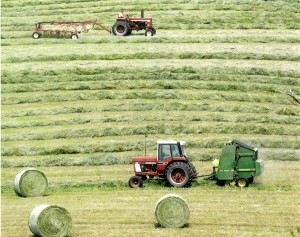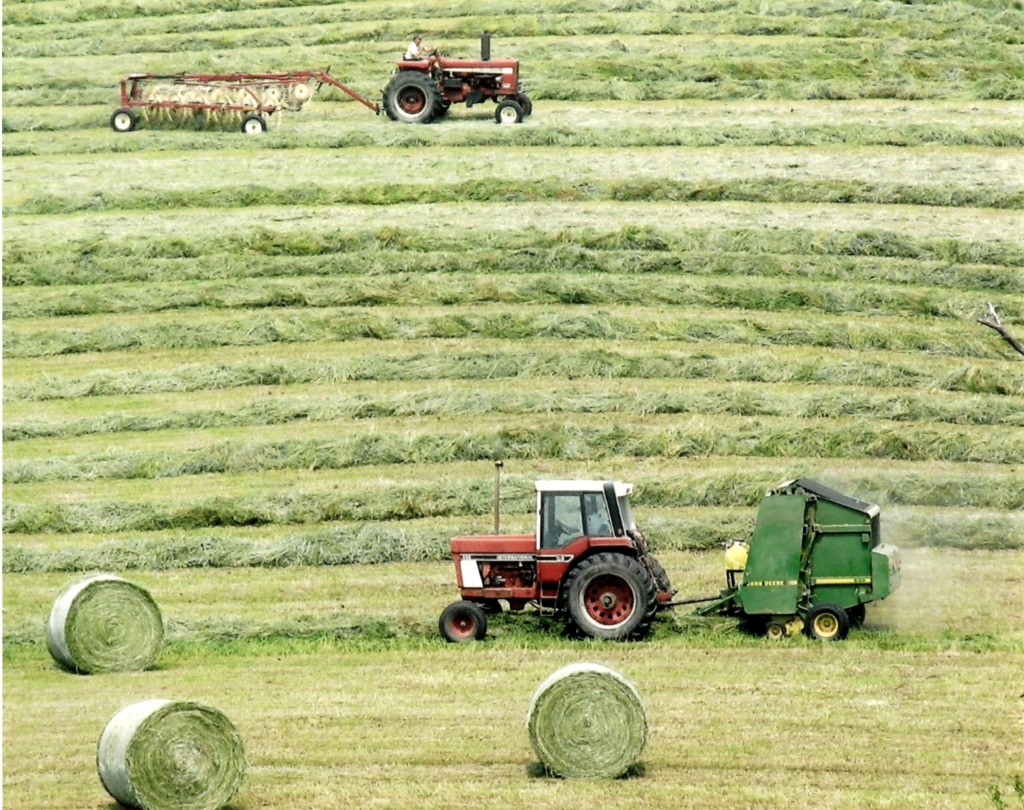Silos and Smokestacks National Heritage Area

Located in the heart of America’s tall grass prairie, northeastern Iowa includes some of the world’s most fertile soil. Across a gently undulating terrain, the landscape breaks into hills, valleys and bluffs as it approaches the Mississippi River at its eastern border. Diverse Native peoples farmed the valleys and managed the upland prairie with fire to improve habitat for game. Europeans arriving in the 1850s divided up the lands into individual farms. Many of these new settlers were immigrants from all corners of Europe. In the twentieth century, technological changes such as seed hybridization, food processing and preservation, and widespread mechanization expanded agricultural production. The region’s increased productivity helped supply world markets with food and grain. Local universities further developed the area as a center of agribusiness innovation. Urban centers supported packinghouses, farm equipment factories, and transportation links to support an agricultural economy.
As in all agriculturally-based economies, the region was buffeted by fluctuations in climate, the national economy and world markets. By the end of the twentieth century, it also faced other difficulties. This part of Iowa struggled with the loss of established food processing facilities, which impacted the vitality of the urban centers. The farming population was aging, some prime agricultural land was falling out of production, and there was farm consolidation that changed both appearance of the landscape and community vitality. More positively, the region still had a strong tradition of family farming and was known for its work ethic and traditional values.
In 1991, a new nonprofit, Silos and Smokestacks, surveyed one of the region’s depressed urban centers as part of an economic revitalization scheme. The survey found that the city’s heritage and economic well-being was inextricably linked to the larger rural landscape. Following on this work, the NPS was asked to study the potential national significance of the region. The resulting NPS Special Resource Study determined that northeast Iowa had made significant contributions to the story of national and international agriculture and proposed designation of a 17-county area as a new entity to be called a heritage partnership to tell this story.
One year later Congress designated a substantially larger region, 37 counties in all, as America’s Agricultural Heritage Partnership. This legislation also authorized a new a local management entity made up of representatives from volunteer associations, private businesses and state and local political subdivisions to interpret and promote the natural and cultural resources that contributed to the region’s significance. Similar to a National Heritage Area, the partnership was a large lived in landscape, which was to be managed locally with the federal government’s role limited to financial and technical assistance .
In the beginning, the new America’s Agricultural Heritage Partnership, which became known by the name of Silos and Smokestacks, faced many challenges. These included the scale of the initiative, which was over 20,000 square miles. Another was the rural agrarian culture, which places a high premium on individual action and on self-reliance. To overcome community concerns about the role of the national government in this new heritage designation, the original legislation authorized the Department of Agriculture to serve as the lead federal agency, given that this department was the traditional federal agency liaison to the farm community (NPS 2004). However, the project stalled when the Department could not envision itself in this new and unfamiliar role as a provider of heritage assistance.
Despite these setbacks, the nonprofit management entity, authorized in the legislation, persevered and built a strong partnership network. In 2000, the NPS was designated as the lead federal partner and the region became part of the agency’s National Heritage Area program. This program now has 49 Congressionally designated areas that receive assistance from the NPS (NPS National Heritage Areas, n.d.; National Park System Advisory Board 2006; Barrett and Mitchell 2003; Barrett and Wood 2003). The heritage area focused on interpretation of the agricultural story in order to implement the partnership network in a way that respected the area’s traditional values of independence and voluntarism. The primary goals were to add economic value through increased heritage tourism and to share the story with residents and visitors.
Over the last ten years, this focus on telling the story and adding economic value has been well received within the 37 counties. The area has 108 formal partnerships built on existing, valued community assets that strengthen the sense of regional identity. It has connected these partner sites around a series of broader interpretive themes and built the capacity of the organizations with targeted grants, workshops and technical assistance. Linking the areas’ identity to the NPS brand, regional signage programs, and multiple social media campaigns have helped promote the heritage value of this very large landscape. A recent evaluation documented that over 3 million people visit heritage sites a year. It also found that the heritage area responded to demand for youth programming, by adding a substantial educational component with a focus on history of farming, reading the landscape, and the impact of agricultural programs and policies. There have been 1,000 participants in training programs and 500,000 visits to the award winning web-based ‘Camp Silos’.
In conclusion, the Americas Agricultural Heritage Partnership has lived up its name and developed a collaborative approach where partners work together toward common goals. It is also able to tackle emerging issues through new partnerships, for example, flood assessment studies with Leopold Center for Sustainable Agriculture, tours to introduce wine-making in the region, and supporting food security through heritage plants and breeds exchanges (Silos and Smokestacks NHA n.d.). This strategy has overcome the initial concerns of residents about governmental designation and outside control of agricultural resources. For National Heritage Areas, the NPS’s role is to be one of the partners offering guidance, limited funding and strong brand recognition. The nationally significant cultural landscape is still managed by the people that live in it, but with a much greater appreciation of the place they call home.



